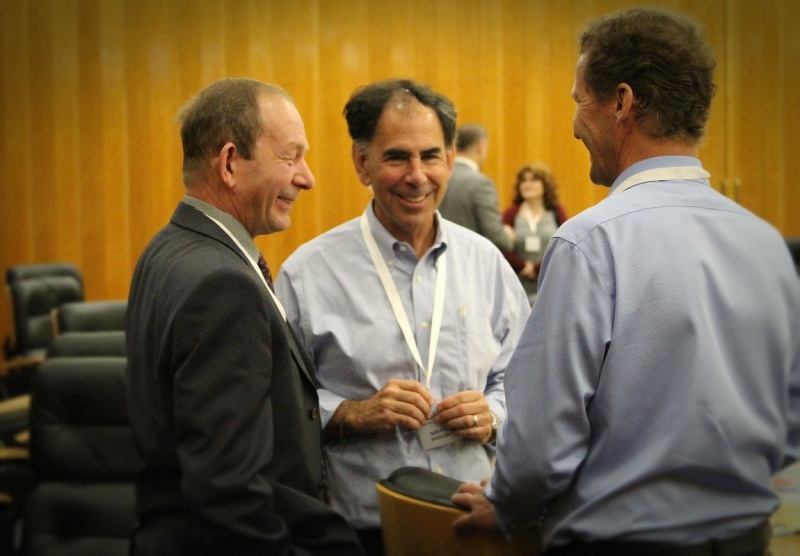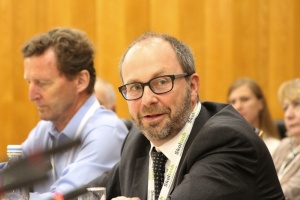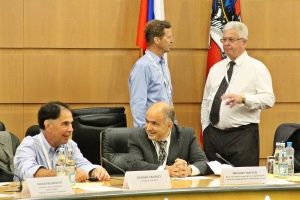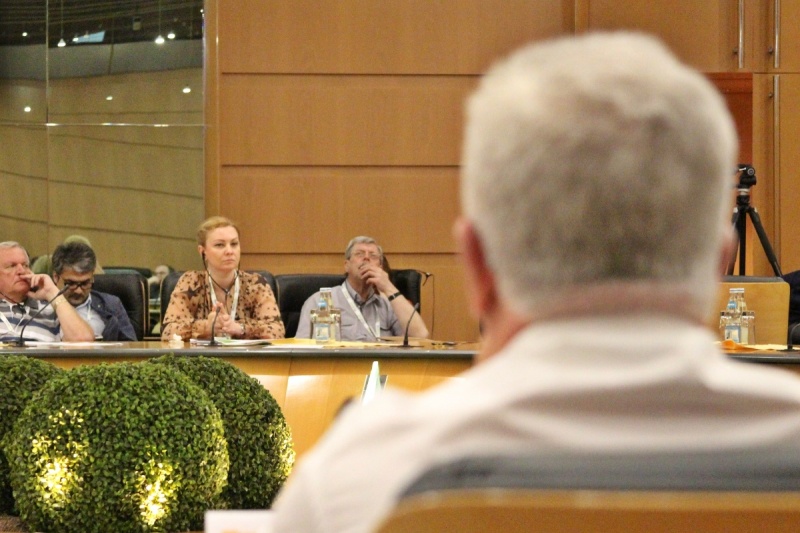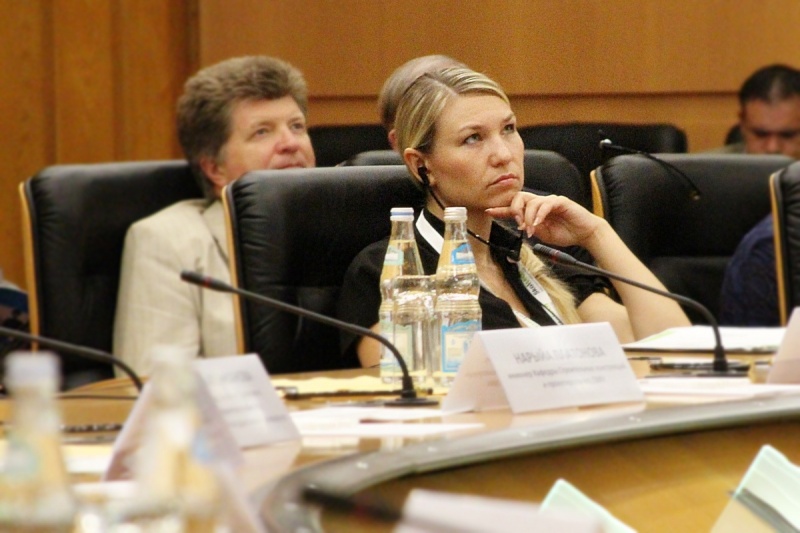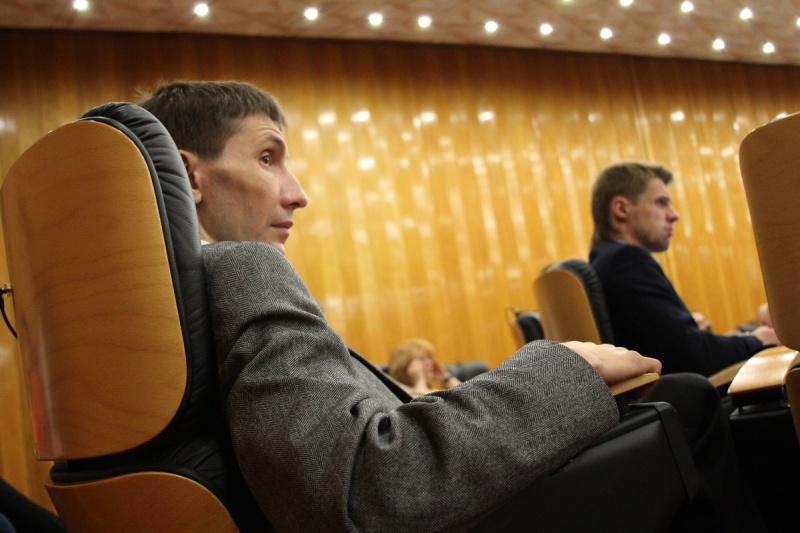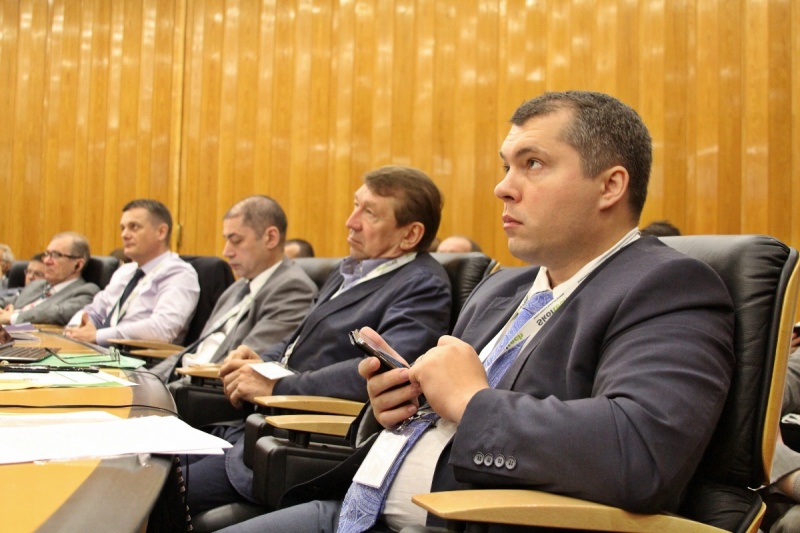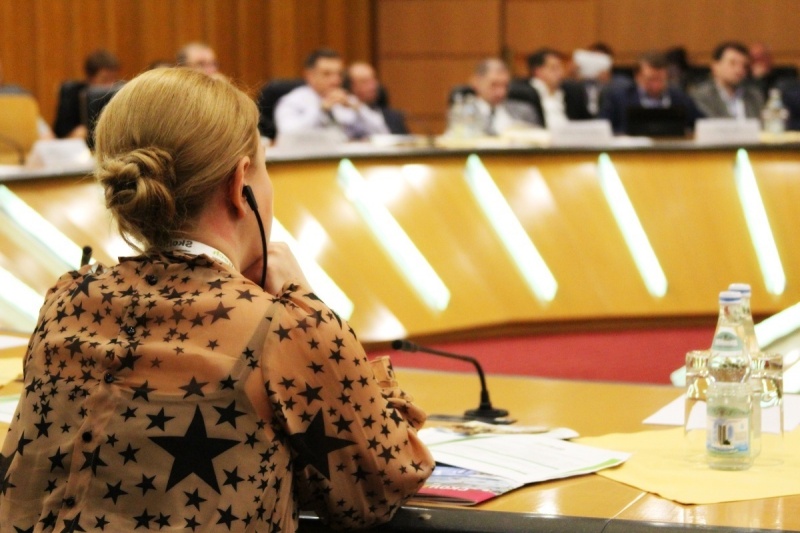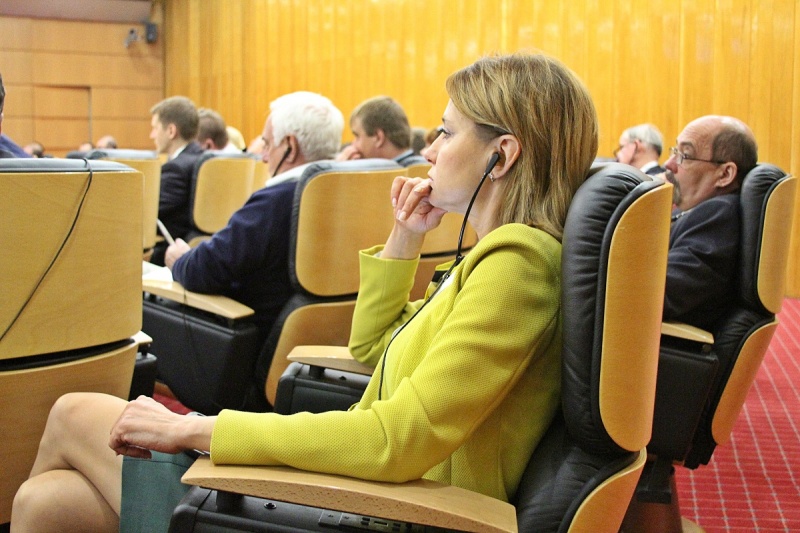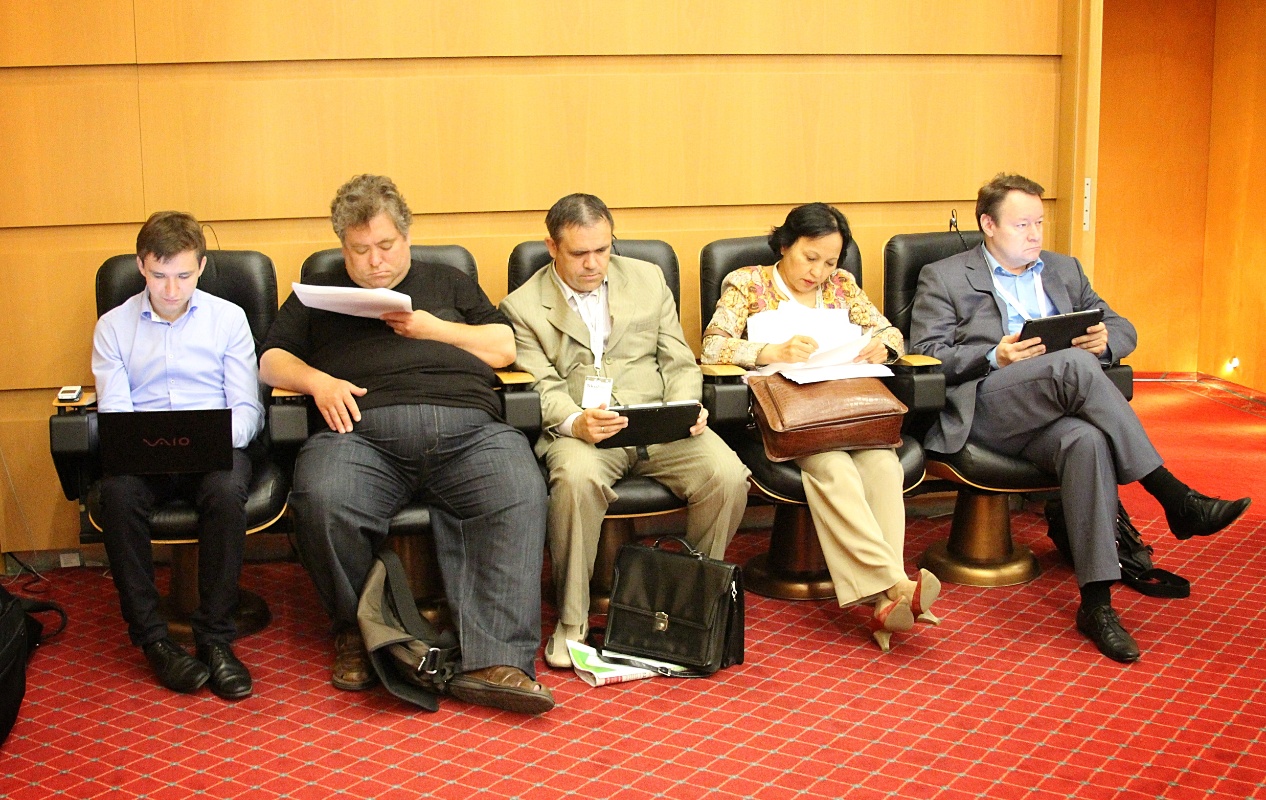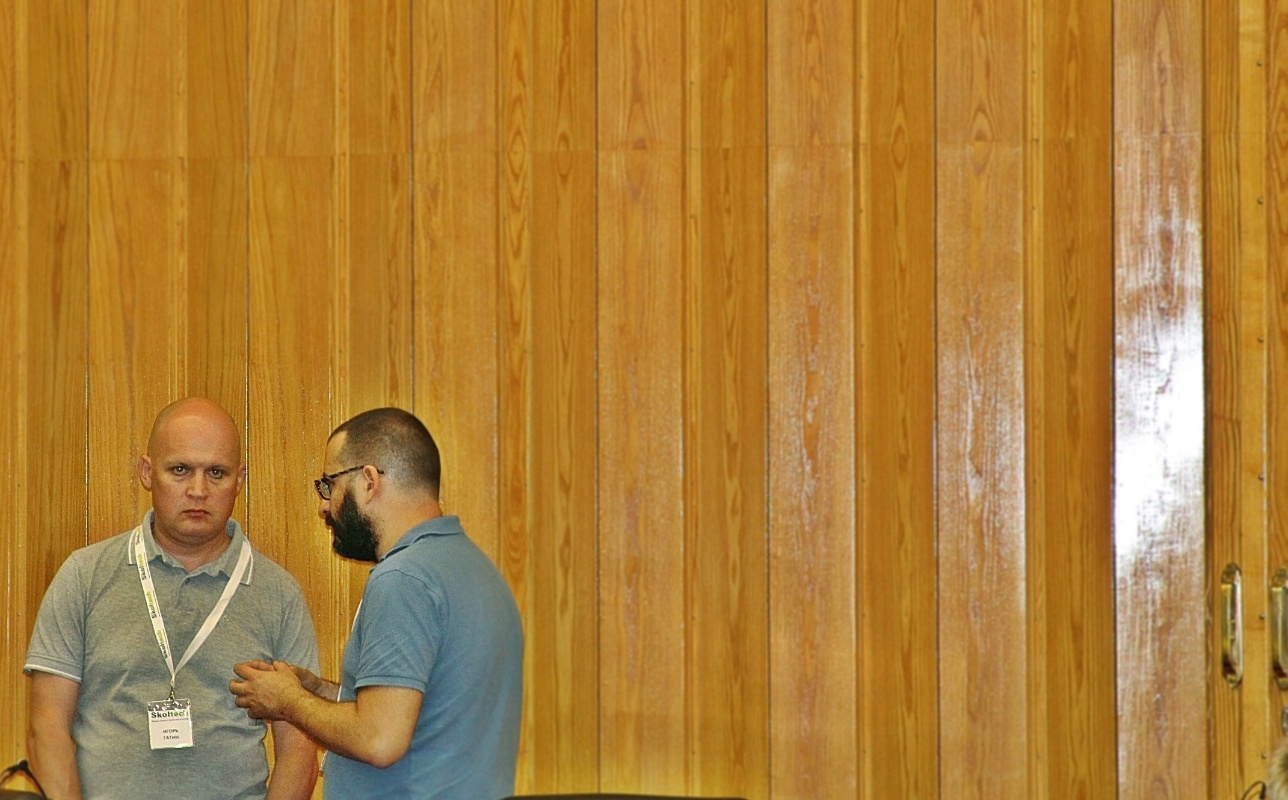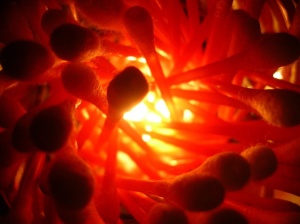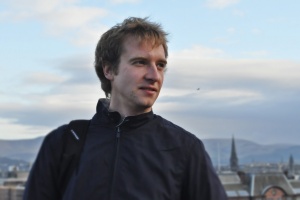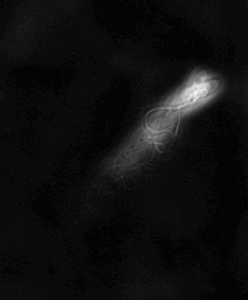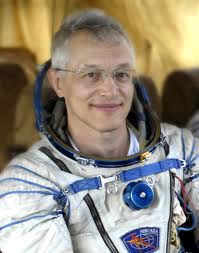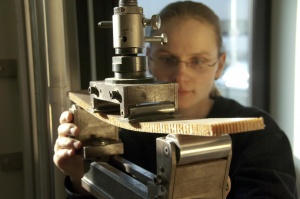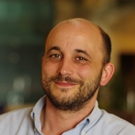Robots which tackle social problems. People who deal with parking troubles. And students who dig out of the Moscow ground a device which transmits existential questions. What does all that have to do with art and science? Everything, if you ask Stass Shpanin and his students. Here are their final projects.
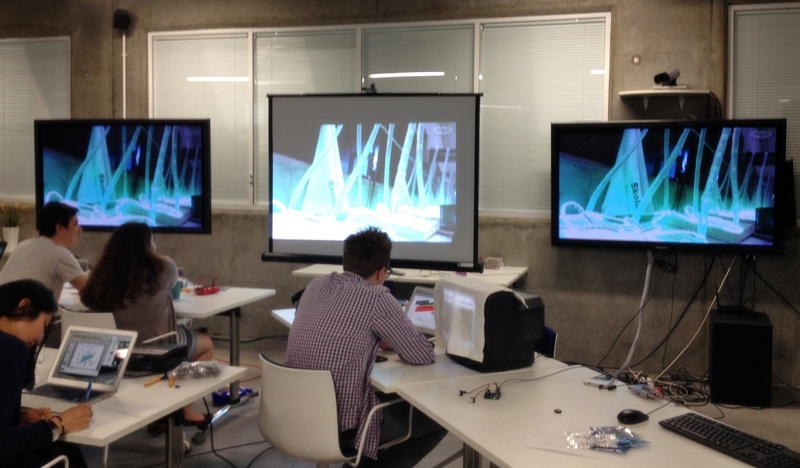
Art and Science course. Photo Stass Shpanin
Science, Technology & Art is a survey course on the scientific and artistic collaborations of the last thirty years. Skoltech students of the Master of Science program have studied the most important intersections between science and art and the different cultural phenomena created
As a practical part of the course, students had created their own cultural and social projects where they have implemented their expertise in technology and science. Those projects range from social activism project dealing with hot topics of parking in Moscow, a survey of Moscovites who were asked to answer two questions (“to be or not to be?” and “are you happy?”) and all the way to robotics that illustrate social problems and electronic systems that connect several working environments.
Here are the 6 projects presented at the Hypercube to professors, guests and journalists.
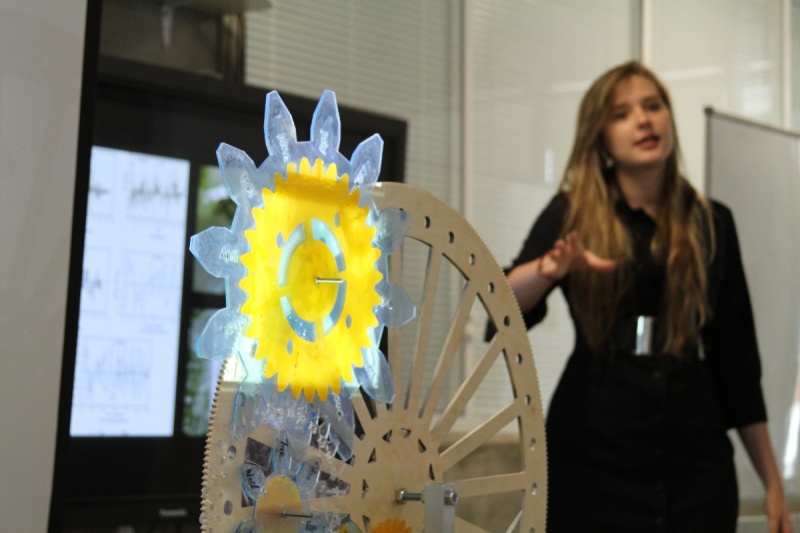
Art and Science: Anna Dubovik presenting her final project “Life Clock”

Elvira Burganova and Dmitry Smirnov present ‘Connected’ – an installation which captures the intensity of students’ talking, shouting (or singing), and translates it into water disturbances (like bubbles) in tubes located at an adjacent building. The purpose is to strengthen trust between members of the Skoltech community
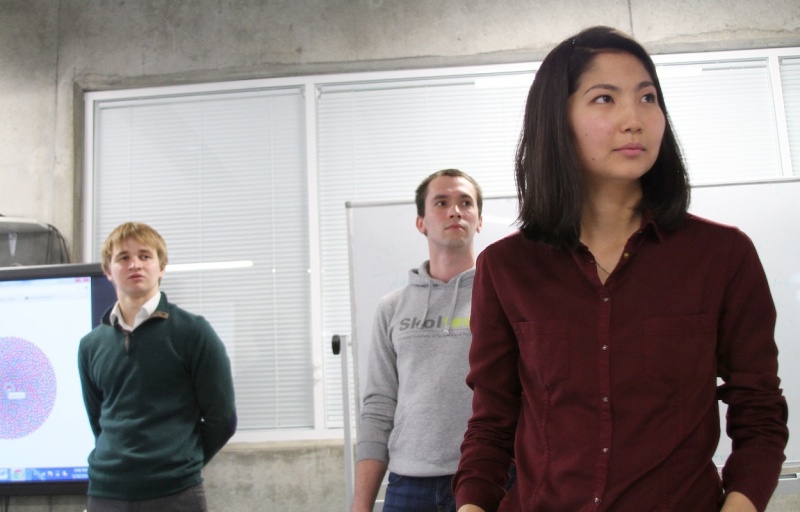
Aidana Nurzhanova, Roman Prilepskiy and Sergei Ivanov present ‘Web Data News’ an analysis of how news spread through social networks.
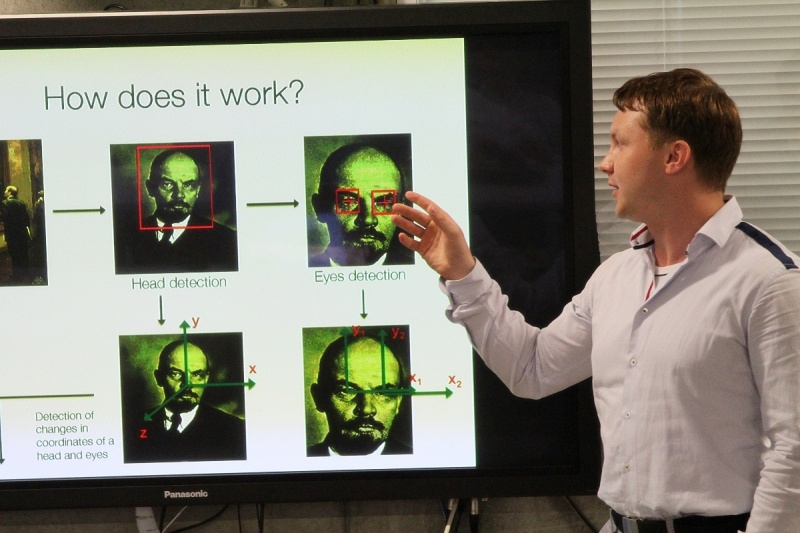
Vladimir Zhuikov presents “Stand & Stare”: a specialized camera installed a few centimeters above a painting or picture analyzes a viewer’s eyes movements. Pretty obvious when it comes to a portrait, but what happens when someone looks at an abstract work by Jackson Pollock? (with Irina Zhelavskaya, Oleg Urzhumtsev, Bogdan Uzbekov)
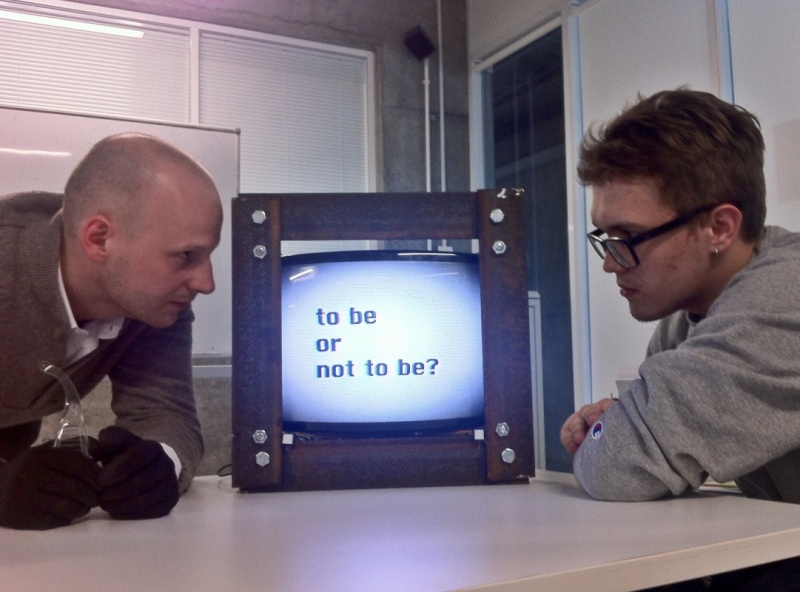
Nikolay Shuyskiy (right) and Nikita Rodichenko: “Moscow Demands”. This device was allegedly dug out of the Moscow ground. The students plans to install terminals like this one around the city and create a feedback channel
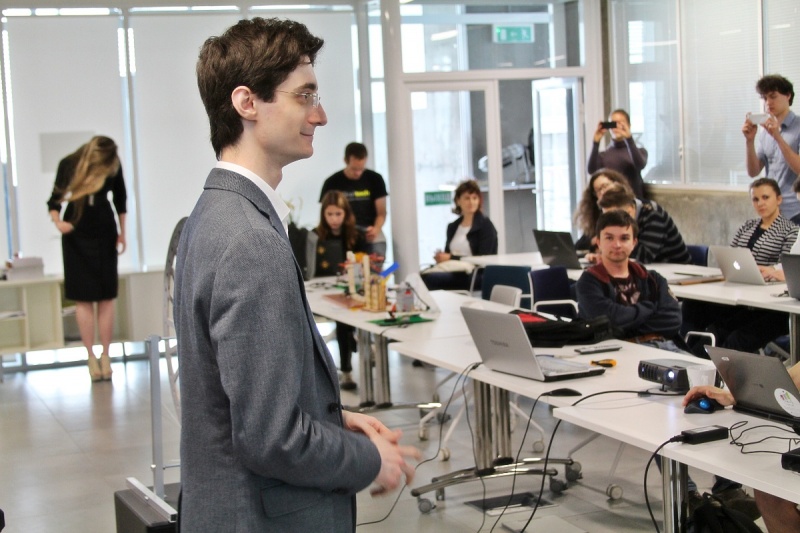
Teacher Stass Shpanin: “In the 21 century a lot of artwork is made not in the studio but in a lab where artists and scientists work together, defining and redefining our culture through technology. “
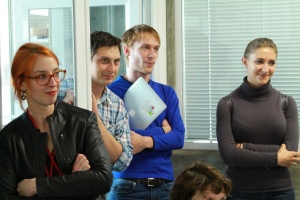
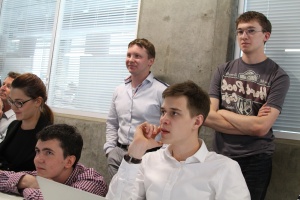
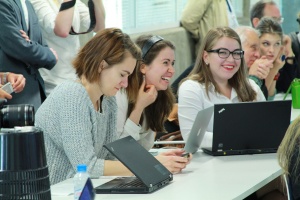
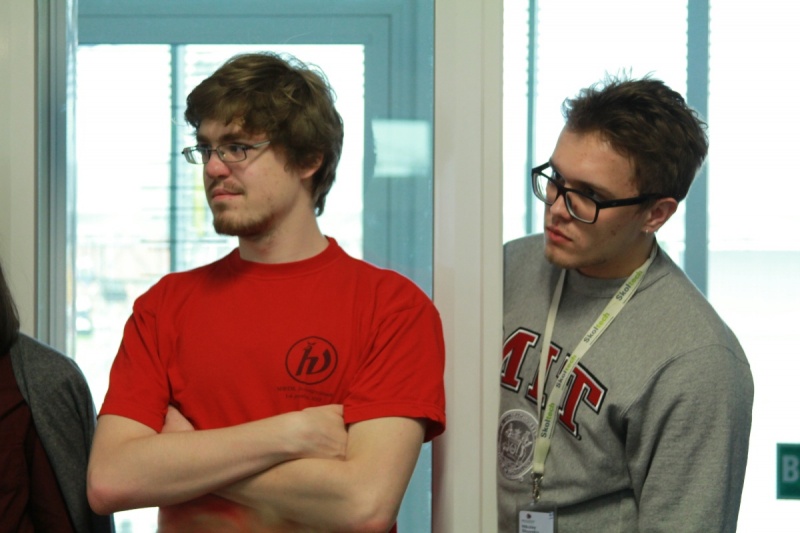
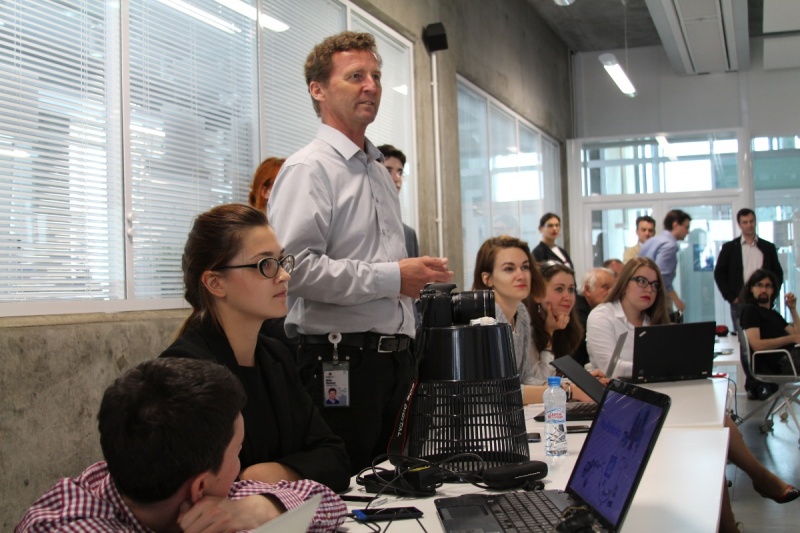
* The Skolkovo Institute of Science and Technology (Skoltech) is a private graduate research university in Skolkovo, Russia, a suburb of Moscow. Established in 2011 in collaboration with MIT, Skoltech educates global leaders in innovation, advance scientific knowledge, and foster new technologies to address critical issues facing Russia and the world. Applying international research and educational models, the university integrates the best Russian scientific traditions with twenty-first century entrepreneurship and innovation.
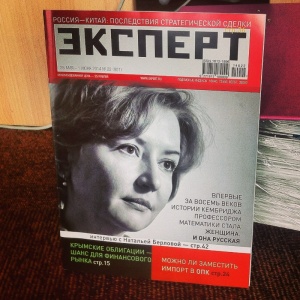

 On a gray summer morning in Moscow, Skoltech’s president Edward Crawley set out to solve a conundrum: how to get the attention of a roomful of jet-lagged education experts.
On a gray summer morning in Moscow, Skoltech’s president Edward Crawley set out to solve a conundrum: how to get the attention of a roomful of jet-lagged education experts.